In this series I’ll be developing a new system for casting magic in tabletop role-playing games. When complete it will be available at joeyv120.itch.io
Check out Part 1 of this series for a little background on my intent for creating this system.
Dice Mechanics
Magic is fickle. It is cold and unwelcoming.
What are the chances of a total noob wizard picking up a scroll and squeezing magic out of it? How about after a little training and progression? What about the most powerful witch in the coven?
There is a certain feeling I’m going for regarding how the dice statistics progress with character skill. I want success at low levels to be unlikely, and I want some small chance of failure at high levels.
Instead of completely reinventing the wheel we’ll look at and evaluate some existing systems to see what we can steal borrow. Using AnyDice (Awesome tool! Please donate!) I looked at the statistics for several popular systems. Below are a sample of those systems and my thoughts on each of them, with an eye toward three of my Design Pillars – Simplicity, Uncertainty, and Progression.
General notes on these charts
The following charts show the chance of success for each game’s core mechanic. Reading each bar from left to right illustrates the progression of success as characters advance in skill. These are all non-binary systems, so the 3 or 4 levels of success are highlighted using different colors (I did my best to select a colorblind-friendly palette).
Each bar reflects a skill level. Games with additive modifiers are labeled “roll+1”, “roll+2”, et cetera. Games with dice pools are similarly progressively labeled “2d6”, “3d6”, and so on.
The SECOND bar in each chart (“roll+0” or “1dx”, depending on the system) represents the base stat for an unskilled PC. The FIRST bar in each chart (“roll-1” or “0d6”) represents a disadvantage roll from the base stat; subtracting 1 from the result or rolling twice and taking the lowest, respectively. Not all these games are explicit about base-level disadvantage in their rules, but I included it here for comparison, and as something I’ll likely include in my final system. Likewise, I extended the progression of each system out to the sixth or seventh level where I could; that’s about where I imagine my system maxing out.
Caltrop Core by Lex Kim Bobrow
Caltrop Core uses a d4 dice pool. Simply roll a number of d4s based on the skill level, and read the highest value:
Absolute Failure. You don’t get what you want, and things get a lot worse.
Partial Failure. You don’t get what you want.
Partial Success. You get what you want, but things get complicated.
Absolute Success. You get what you want — and more.
My immediate thought is I don’t like the probability progression here. It starts with too high a chance of success and continues to get too easy too quickly. Not what I’m looking for in my game.
Of course, there is some flexibility around what “absolute success” and “partial success” could mean, but for comparison I'll be taking it at face value: any “success” means magic happens, the lowest level of failure means the magic just isn't with you (maybe your midi-chlorian count is too low). I'll reserve the middling success levels for things like miscasts and mishaps. But 50% chance of casting at level 1 is way too high for my taste, and the rest of the progression misses the mark too.
It also lacks the uncertainty I’m interested in, the obfuscation of the probability. 2-in-4 is very easy to wrap your head around, and even a basic understanding of statistics quickly lets you calculate the chance of success with 2d4.
A smaller complaint I have with Caltrop Core is that (most) four-sided dice are designed in a way that you don’t get a lot of “action” out of the roll. To put it bluntly, rolling a physical d4 isn’t very satisfying. Call me superficial.
Forged in the Dark by John Harper and One Seven Design
Blades in the Dark, and other Forged in the Dark (FitD) games, use a pool of six-sided dice. The highest die determines the level of success:
If the highest die is 1-3, it’s a Bad Outcome. Things go poorly. You don’t achieve your goal and you suffer complications, too.
If the highest die is a 4 or 5, that’s a Partial Success—you do what you were trying to do, but there are consequences: trouble, harm, reduced effect, etc.
If the highest die is a 6, it’s a Full Success—things go well. If you roll more than one 6, it’s a critical success—you gain some additional advantage.
Again, for me it starts out too easy, a brand-new magic user has a 50% chance of casting their first spell. I will, however, give FitD extra points for simplicity.
I could make some tweaks in my game by saying “level 1 PCs start at 0d6”, but I want to save that disadvantage for other situational hinderances, not just the PCs’ base ability. Maybe they're trying to cast Feather Fall for the first time while plunging down a dark well, that's where I want that 0d6 roll to be.
Powered by the Apocalypse by D. Vincent Baker and Meguey Baker
In games that are Powered by the Apocalypse (PbtA), the player rolls 2d6 plus the appropriate stat. If the sum is…
6 or less: a Miss; something goes wrong.
Between 7 and 9: a Weak Hit; you get what you want, but there are consequences.
10 or more: a Strong Hit; you get what you want.
Same problem, chance of a Miss is too low, and I want a non-zero chance of a Miss at high levels. Remember, magic is fickle.
I could consider changing those target numbers to from what PbtA uses. More on that below.
24XX by Jason Tocci
Games based the 24XX system use a step-die system. As the character’s skill progresses, instead of adding a bonus to a roll or more dice to a pool, they use a higher-sided polyhedral die, from d6 to d12 (under most circumstances). Whatever skill die is cast, the outcome is resolved as follows.
1–2: Disaster. Suffer the full risk. GM decides if you succeed at all.
3–4: Setback. A lesser consequence or partial success.
5+: Success. The higher the roll, the better.
I get it. You bought six funny math rocks and you want to use them all. But isn't it fun to throw a fistful of dice instead of just one at a time?
I love what 2400 and the 24XX system does with the rest of the game design, but the step-die system doesn't do it for me. Plus, how often do you see a player grab a d12 instead of a d20, or question if they accidentally rolled a d8 last time when that skill called for a d10? It's common enough that I want to avoid that confusion.
I’ll give 24XX big points for simplicity, but it falls short in uncertainty.
Ironsworn by Shawn Tompkin
Heavily inspired by PbtA games, Ironsworn takes an interesting turn on dice mechanics that I haven’t seen before. Players roll a single d6 and add a stat modifier to the result; this is called the Action Score (AS). They then roll two d10, called the Challenge Dice (CD), and compare the AS to each CD. Here is how to interpret the result:
Strong Hit: AS is greater than both CD. You succeed.
Weak Hit: AS is greater than only one CD. You succeeded, but with consequences.
Miss: AS is greater than neither CD. You failed.
I don’t know if I got this from somewhere or made it up, but narratively, I like to think of the Action Score as the character’s agency on the world around them and the Challenge Dice as the world acting against them to inhibit their action.
Note: when the CD are a matching pair there is a “twist” in the narrative, or turn of events, either in the player’s favor or against them, respective if it’s a Hit or a Miss. This is like a critical hit or a critical miss. I’m not graphing those here for now to avoid cluttering the chart.
Immediately, I see a progression curve that I like: difficult at low levels, gradually becoming easier. And at the highest level there is still a measurable chance of failure. While it’s not the simplest system in the bunch it’s more intuitive in practice than it may appear. This system gets big uncertainty points from me.
Modifying the Curves
At this point I’m going to toss out the d4 pool from Caltrop Core and the step-die from 24XX because they have some disqualifiers for me. And while Ironsworn seems very promising, I want to see if I can tweak the progression curves for FitD and PbtA by changing the target numbers and dice sizes. But I’ll stick with d6’s and d10’s since those are the more common sizes to have multiples of. Here are some variations on those systems:
PbtA’s 2d6+stat, but ≤8 is a Miss, 9-10 is a Weak Hit, and ≥11 is a Strong Hit. This gives us a non-zero chance of failure at higher levels, but may be a little too difficult now at low levels:
PbtA, but 2d10+stat where ≤11 is a Miss, 12-15 is a Weak Hit, and ≥16 is a Strong Hit. Okay, this looks pretty good. At a glance it seems like a similar progression to Ironsworn:
[EDIT: upon publication, the x axis labels in the above image were incorrect, as a keen-eyed reader pointed out. The labels are now shown correctly.]
FitD’s d6 pool, but 1-4 is a Bad Outcome, 5 is a Partial Success, 6 is a Full Success, and two or more 6s is a Critical Success. Not bad, a little harsh at the base level, and it would be nice too if it were possible to crit there.
FitD, but a d10 pool where 1-7 is a Bad Outcome, 8-9 is a Partial Success, 10 is a Full Success, and two or more 10s is a Critical Success. I like this one too, but it may be too fast of a success increase early on.
Final Thoughts
There are two options here that I really like: Ironsworn and PbtA-2d10. Both obfuscate their probabilities; both have progression curves that feel like they align with my expectations; both are simple, but complex enough to be interesting.
I especially like the novel Action versus Challenge concept of the Ironsworn system. The moving target of the Challenge Dice is chaotic, but somehow quite elegant. A perfect fit for a magic system. Oddly, with a static target, players are still going to keep asking “did I hit?”. With this they roll for their target, it’s right in front of them each time.
I’ll move forward with the Ironsworn system for now, knowing I can fall back to PbtA-2d10 if something isn’t working. Of course, after some play-testing we might find a reason to take a different path entirely.
Until Next Time
I welcome your feedback and constructive criticism as I continue to develop this. Feel free to comment. Otherwise, I hope to see you again soon with Part 5 of this series where I’ll work out character advancement mechanisms. Cheers!



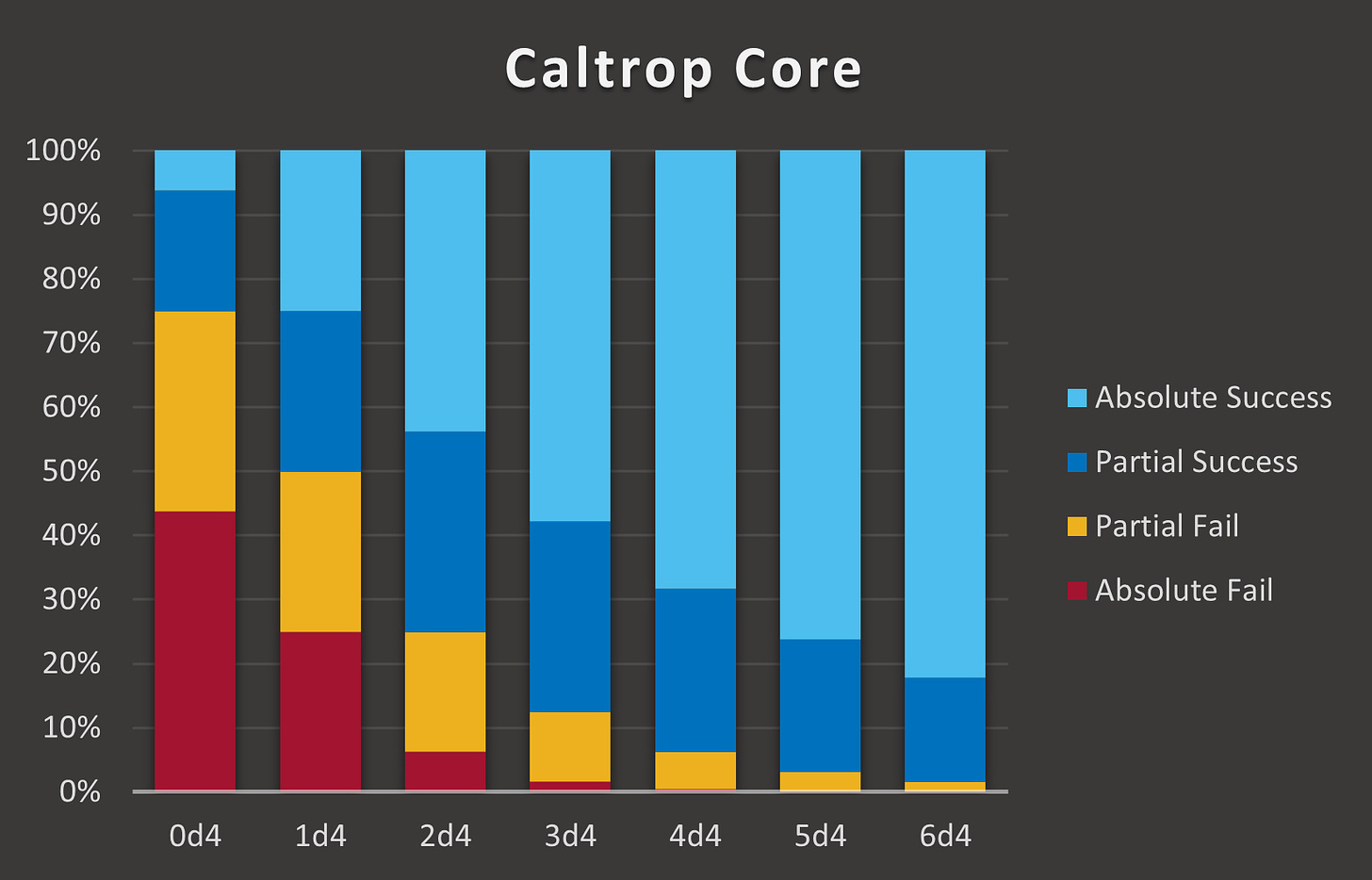
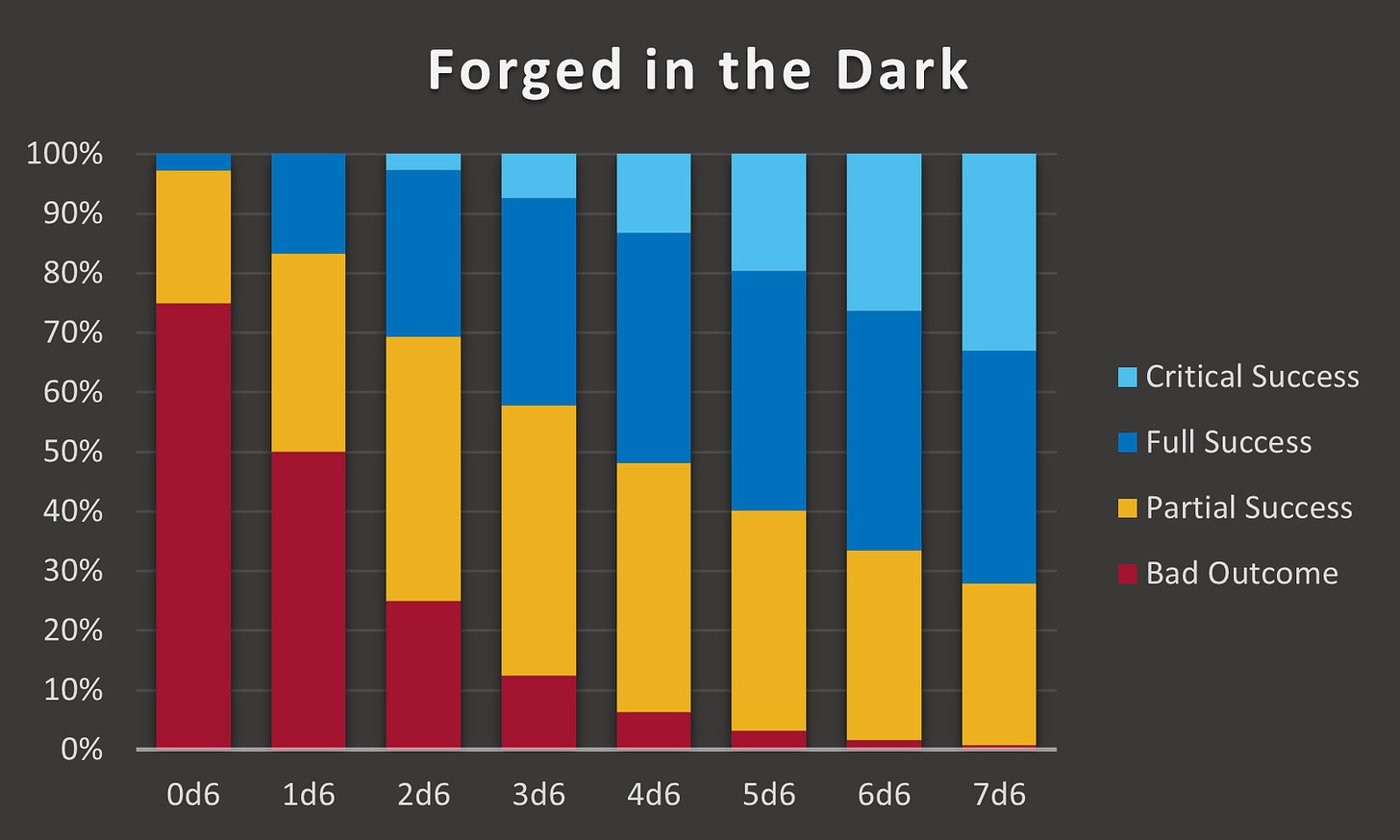
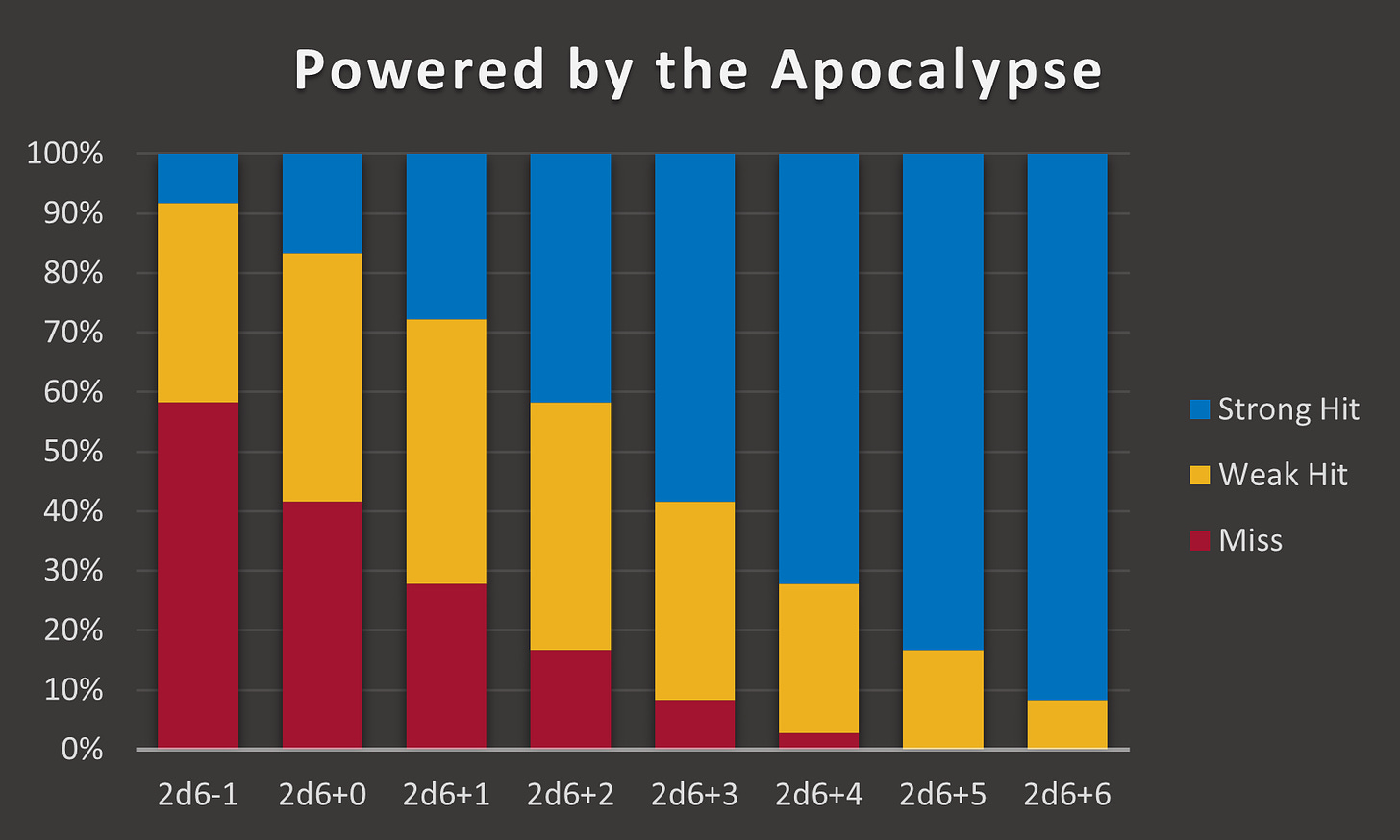


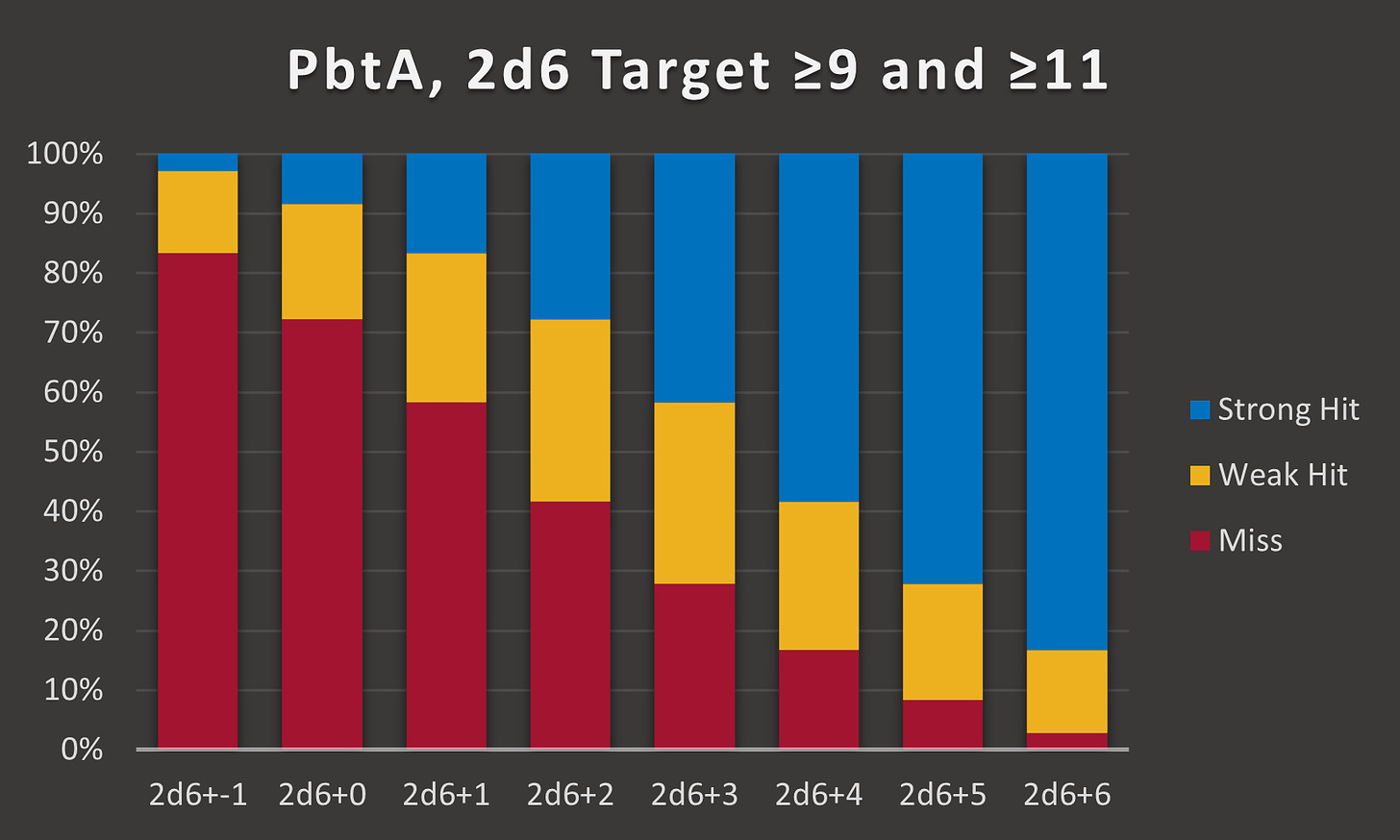
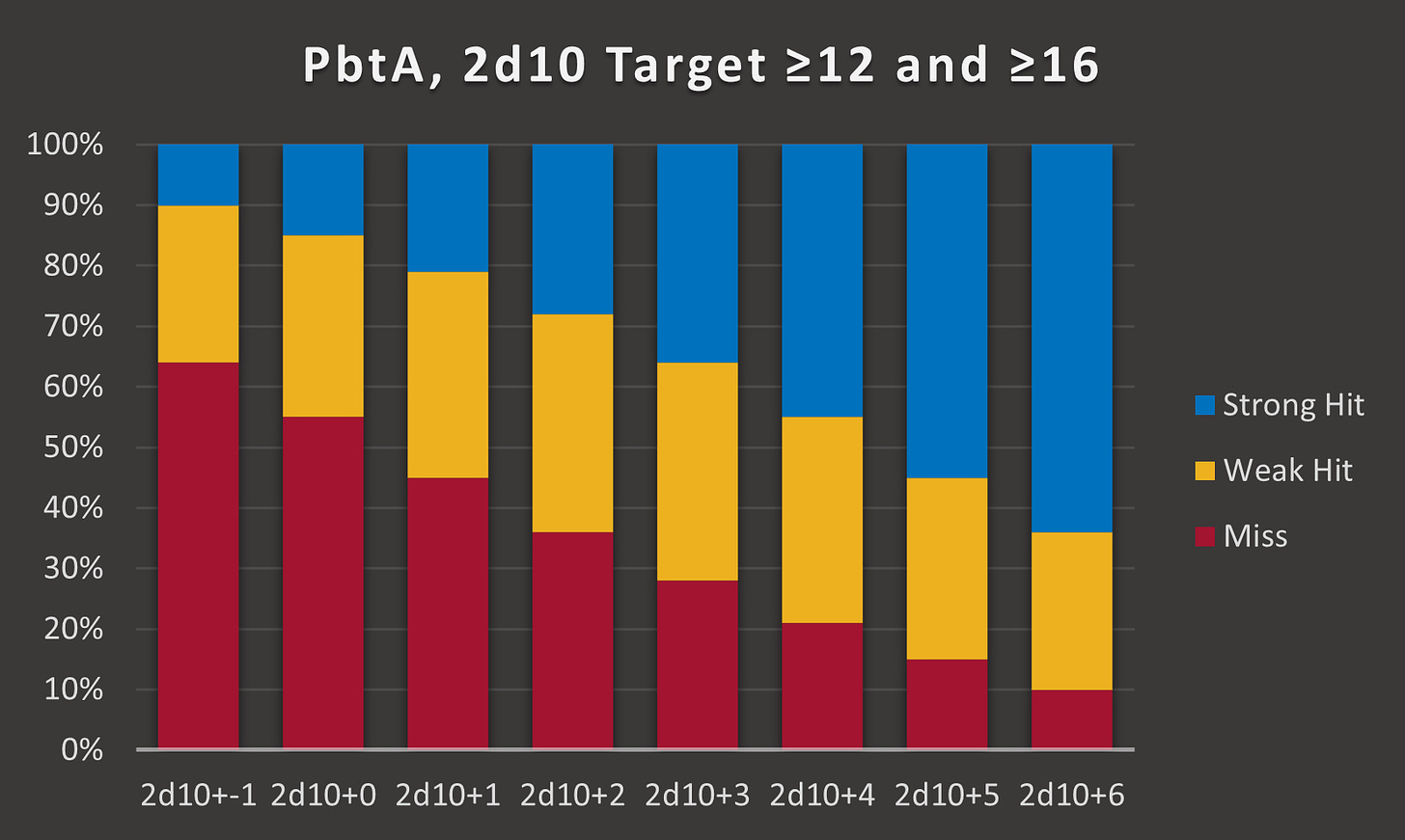
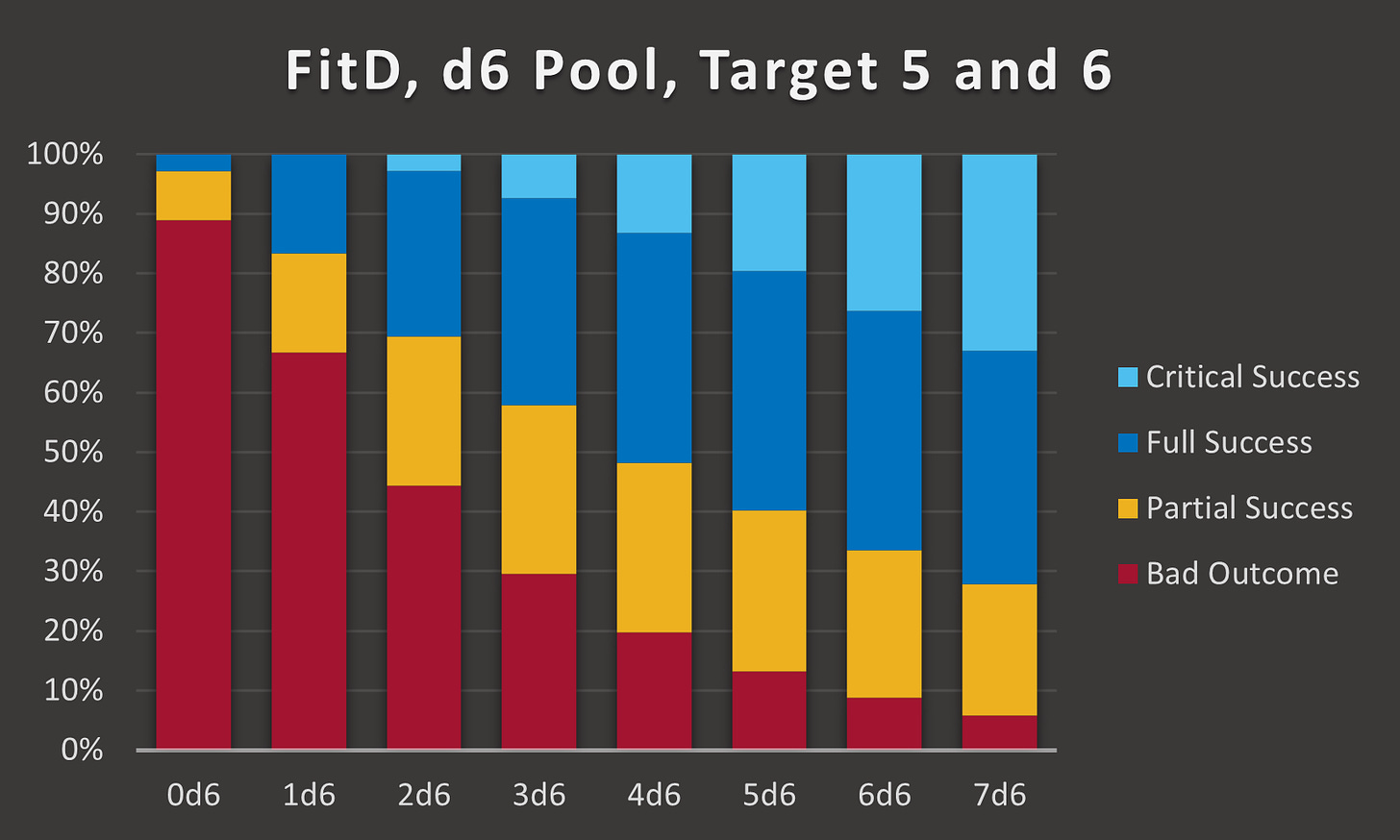
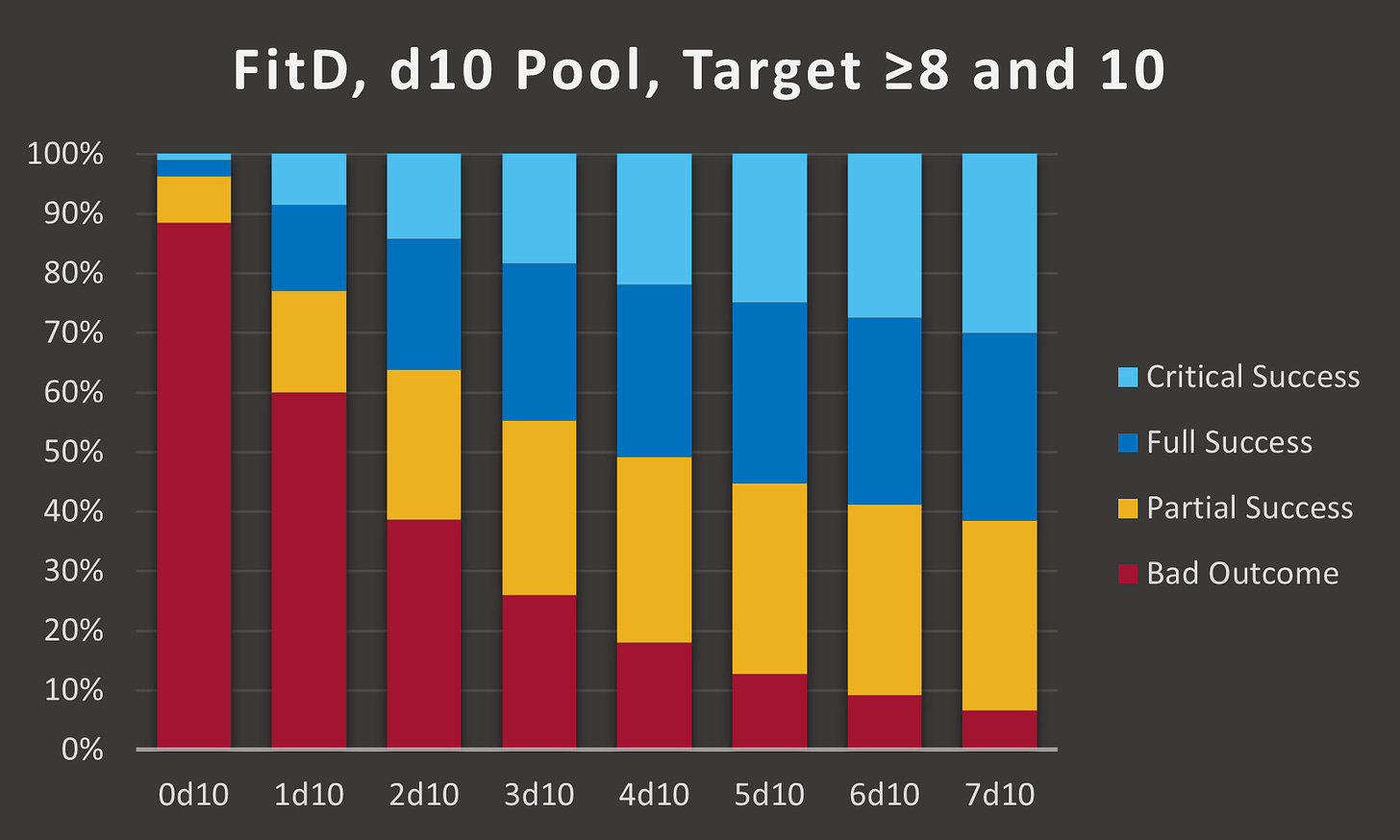
I’m waiting with bated breath.